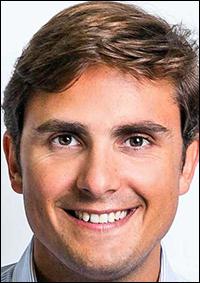Jun 25, 2018Charitable group Sanku has found that bringing vitamins and minerals to small local mills spread across Africa is the best way to ensure that children receive the nourishment they need. But managing those mills remotely proved to be a challenge as the organization has aimed to equip 3,000 mills with automated technology during the next four years. The Internet of Things (IoT) is providing the solution, with a network from Vodafone. The U.K.-based telecommunication company is working with Sanku to enable cellular-based, automatic collection of data from mills across Africa.
Sanku was founded to address nutrient deficiencies in children. The organization has designed a system by which small-scale mills throughout developing countries mix flour with nutrient supplements and share data about the process, using sensors and cellular-based connections. The project uses Sanku's machines, known as dosifiers, to mix the supplements and milled flour.
Approximately 45 percent of child deaths globally are due to malnutrition, according to the World Health Organization. The problem is especially acute among African children. Most meals in Africa rely heavily on starchy flour, which means many children are deficient in key nutrients found in other plant-based foods and meats.
Sanku developed the dosifier to add nutrients into the flour, which can then be used to make cereals and breads eaten by children and adults in the geographic area around the mill. The dosifiers add vitamins and minerals such as iron, folic acid, iodine, vitamin A and zinc to the flour, in order to create a healthier version of the food people eat most, says Felix Brooks-Church, Sanku-PHC's co-founder, president and CEO.
Each mill has the capacity to process more than one metric ton of flour daily. The dosifiers use built0in sensors to detect the weight of grain in the hopper. Concentrated nutrients are placed in another dispenser, and are added to the flour as the grain is processed. The sensors identify the outflow of grain based on weight, then prompt the dispensing of the nutrients into the mix in proportion to the loss of weight. That sensor data is also collected and stored in the machine to indicate how much flour and nutrients have been used.
However, the machines require some human intervention by Sanku's staff. The supplements need to be replenished periodically, and the machines need to be maintained, as well as repaired if they break down. Sanku must also track whether the machines are being used properly.
Workers could not access the data from the machines themselves without appearing physically onsite. However, getting employees onsite to the many mills across such a wide area poses a challenge. Prior to the deployment of the IoT-based system with Vodafone, Sanku relied on in-person site visits and paper reporting to monitor flour mills. One Sanku worker could then support 25 mills with periodic visits.
The company's global reach is expected to increase exponentially. In fact, Sanku has a goal of reaching 100 million people with its nutrient-enhanced flour by 2025. Therefore, the organization began working with Vodafone to set up a cellular-based system to get data from each dosifier to Sanku's centralized data center at least once daily, if not in real time.
At each mill, Vodafone provides an IoT SIM card for use in a mobile phone, or a USB connection, for the machine, explains Ludovico Fassati, Vodafone Americas' head of IoT. If a mill is using the USB stick, a worker removes the stick from the dosifier at the end of each day and downloads the data onto a mobile phone or smart device. He or she then utilizes a Vodafone app with the cellular connection to forward the data to the Sanku data center.
If an individual is using the SIM card, the data can be sent directly from the machine to the cloud-based server, via the mobile device, so that mill operators need not become involved in data management at all. In this latter case, the IoT solution sends data showing the precise quantity of nutrients added to the flour every five minutes over the cellular network.
Most areas of Africa have a 2G, 3G or 4G network that Vodafone can employ to capture data and forward it to the data-center server, Fassati says. Once the information reaches the data center, he explains, "They can see details such as the time of usage, how many pounds were produced and whether the machine is on or off." The firm can employ the data to ensure that nutrients are properly being applied.
If data-center personnel notice that the machine is not in use, or that it requires repair, a staff member can be dispatched to the mill to provide support. Visiting Sanku employees can also restock the nutrients for the machine. "Our area of influence is making sure the network is going well," Fassati says, and if the mills pose geographic challenges, Vodafone can address them. "We tend to consider a customer's concern our concern."
Sanku started to develop a machine that could fortify flour in 2008, according to Brooks-Church. He took over engineering and designing of the dosifier in 2010, and the prototype was tested the following year in Nepal, before the team expanded to East Africa in 2013. The organization then set up operations in Mozambique, Malawi, Rwanda, Kenya and Tanzania. Sanku-PHC now helps provide fortified flour to approximately 1,000,000 people, Brooks-Church says—and with the IoT connection, the firm is prepared to scale significantly.
Since Sanku's dosifiers were connected to Vodafone's global network, a single Sanku staff member can manage 100 mills (four times the previous rate) by viewing the remote data to learn when a mill may run out of nutrients, or when maintenance or repair works is needed. Sanku expects to service 100 million people by 2025. For Vodafone, Fassati says, the project represents the telecom company's own drive to connect machines and, in so doing, "transform life," he says. "We're very excited about it," he states.



